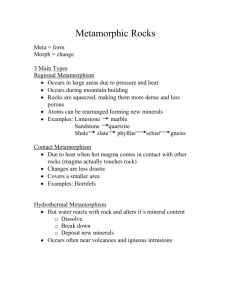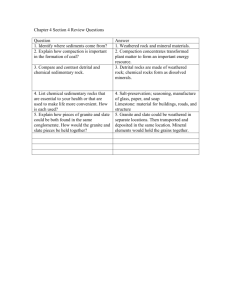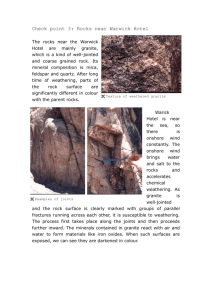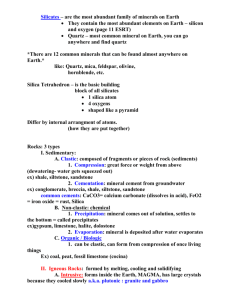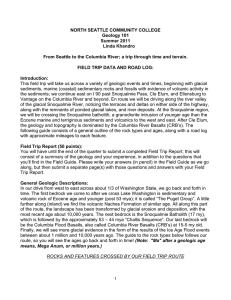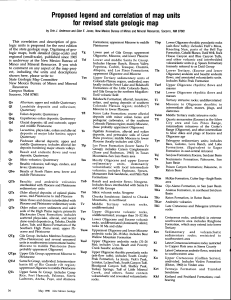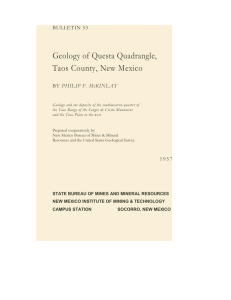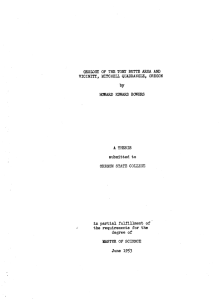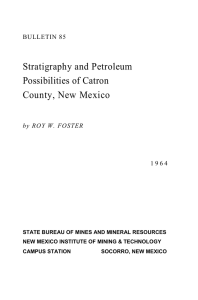Slide 1
advertisement
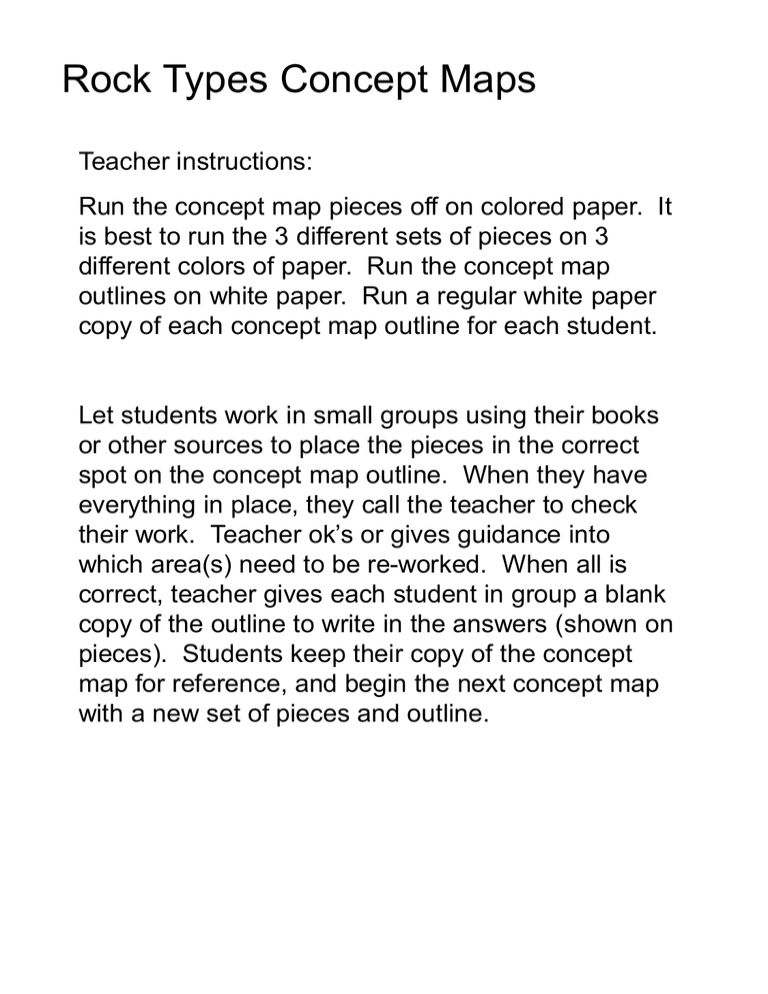
Rock Types Concept Maps Teacher instructions: Run the concept map pieces off on colored paper. It is best to run the 3 different sets of pieces on 3 different colors of paper. Run the concept map outlines on white paper. Run a regular white paper copy of each concept map outline for each student. Let students work in small groups using their books or other sources to place the pieces in the correct spot on the concept map outline. When they have everything in place, they call the teacher to check their work. Teacher ok’s or gives guidance into which area(s) need to be re-worked. When all is correct, teacher gives each student in group a blank copy of the outline to write in the answers (shown on pieces). Students keep their copy of the concept map for reference, and begin the next concept map with a new set of pieces and outline. Sedimentary rocks Compaction pressure from weight of water pushes sediments together All form from sediments into layers under water Clastic Organic Conglomerate Limestone Chemical Breccia Gypsum Evaporation Sandstone Rock Salt Shale Cementation – sediments stuck together with mineral glue Evaporites Chalk Sediments of various sizes Coal Once living materials Metamorphic Rocks Mineral crystal bands or layers Shale Schist Any kind of rock Foliated Gneiss Sandstone Heat, pressure, Granite, chemical basalt, reactions or slate Contact metamorphism – occurs when rocks are heated by contact with hot magma Mineral crystal bands or layers Quartzite Marble Unfoliated Limestone Granite Regional metamorphism – occurs over large areas when deep rocks are changed by heat and pressure Slate Igneous rocks Hot, molten lava Dark colored Dark colored Coarse grained Earth’s surface Earth’s interior Slow cooling Porphyry Peridotite Obsidian Granite Rhyolite Two cooling rates Half and half Fast cooling Andesite Light colored Fine grained Intrusive Diorite Pumice Light colored Extrusive Gabbro Basalt Scoria




